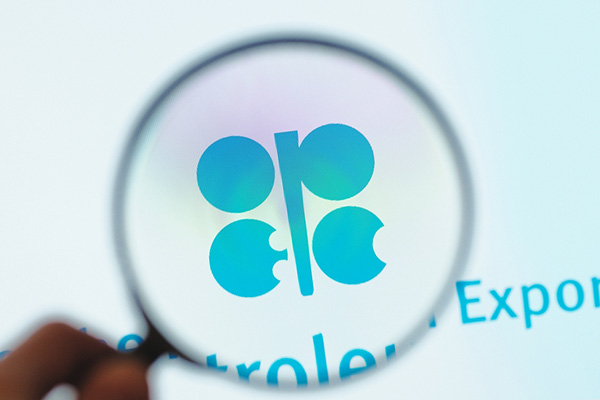
Opec pulls together an agreement to reduce
output to 32.5 mbpd
Opec deal unlikely to affect oil market balance
LONDON, December 1, 2016
Opec has agreed to cut production by roughly 1.2 million barrels per day (mbpd) to 32.5 mbpd, which equates to a 4.5-4.6 per cent cut per member country, said Barclays in a new report.
“We believe the outcome is consistent with our view of what Opec production levels were expected to be in 2017 irrespective of the deal reached today,” the British multinational banking and financial services company said in its Oil Instant Insight.
In other words, the meeting is highly unlikely to substantially affect the oil market balance. “Compared with our assessment of Opec supply last month, we have adjusted our Q1 17 production estimate lower by 350,000 b/d, which will result in a slightly steeper draw than our balances were forecasting,” the report said.
What is incremental
There are several market effects. “First, given our already conservative expectations for Opec supply next year, we continue to expect backwardation in H1 17. As we highlighted in the Affirming Upward Bound note, we have long expected the Dec 17/18 spread to narrow,” Barclays said.
“This is an agreement to cap production levels, not export levels. If exports from the Middle East truly tick lower, we are likely to see the Brent Dubai spread narrow as a result of slightly less Dubai-linked crudes (from Opec), and status quo to higher Brent-linked crudes.”
With the agreement today, Opec has put a new floor under prices. It reaffirms the view, agreement or not, that Saudi Arabia does have a price pressure point, and that in this environment, it is willing to accept that there is a cap above which the market can digest incremental Opec output.
A motivating force behind the Opec deal has been the concern over the drastic decline in oilfield development activity and ensuring sufficient oil production over the medium to long term.
Agreement details: What we know
Opec managed to reach an agreement to reduce output by 1.2 mbpd to 32.5 mbpd, but the deal is contingent on the participation of key non-Opec countries.
The lion’s share of the cut is expected to come from the GCC countries, including a roughly 500 kb/d cut from Saudi Arabia, but Iraq and Iran are also expected to cut production (Figure 1).
Indonesia has suspended its Opec membership, so cuts which it was expected to shoulder have been redistributed among other member countries.
Agreement is contingent on a 600 kb/d reduction in supply from key non-Opec countries and Opec reportedly already received commitments from several countries, including Russia, which would cut production by 300 kb/d.
A ministerial committee composed of Opec members (Algeria, Kuwait, Venezuela) and two non-Opec members would closely monitor the implementation of and compliance with this agreement.
The non-Opec country meeting will take place on December 9, and the next Opec meeting will take place in late May 2017.
Opec may find it difficult to compile 600,000 b/d of non-Opec producer cuts
“Several non-Opec countries will show declines on an annual basis in 2017 but, in our view, Opec will find it difficult to compile an output cut near 600 kb/d. In aggregate, we expect production growth of around 160 kb/d in 2017, but production is likely to be 250 kb/d lower, on average, in Q2 17 than during the fourth quarter,” Barclays said.
“Despite Russia’s commitment to cut by 300 kb/d, we still assume higher output in 2017, but consistent with other years, a cold winter could see Q1 and Q2 17 production roughly 1-2 per cent (100-200 kb/d) lower than the average for Q4 16.
“Based on our most recent balances, we expect several producers including Mexico, Azerbaijan, and Colombia to show declines next year. Other producers that are unlikely to attend the meeting on December 9 are likely to show declines as well. Those countries include Thailand, Vietnam, Egypt, China, and India. Taking most of the significant declines together amounts to production that is 500,000 b/d lower, but add to it expected y/y contributions from the US and Russia next year, as well as several other non-Opec producers, and net output is still higher.
“We find it difficult to find other non-Opec countries that could add to Russia’s stated 300 kb/d commitment. Mexico and Colombia are likely to show roughly 200 kb/d of declines, but we see as China unlikely to contribute as part of this process, even if in reality its production is forecast to be lower,” the report said.
Outlook: Too good to be true
The conclusion of the meeting pens a new chapter in Opec’s market management, but at the end of the day, we are highly sceptical that Iraqi and Iranian output will be lower in Q1, compared with their reference level, said Barclays.
Given that the agreement only comes into force from January, Saudi Arabia and other producers could technically produce high levels in December to add to their inventory levels, which they can use for export management during the six-month course.
As to Saudi Arabia, the reduction in output can be seen almost entirely as a response to lower demand, lower refining runs, and field maintenance needs. They could be made partially whole if neutral zone output returns.
Opec continues to be successful at keeping the market guessing and will continue to do so until it sees evidence that stocks are drawing more actively in the first half of the year.
“We maintain our price forecast, and should countries exercise full compliance with the intended cut, we see upside risk to our estimate of $57 per barrel in Q1 17,” Barclays said in the report. – TradeArabia News Service







